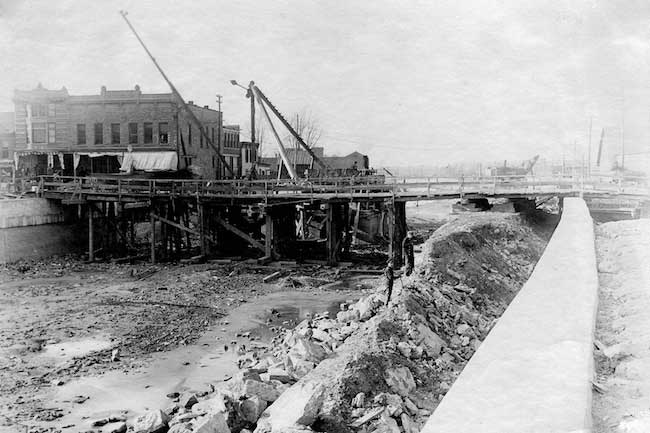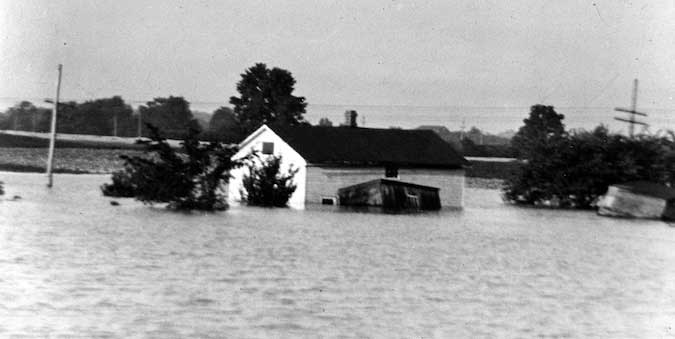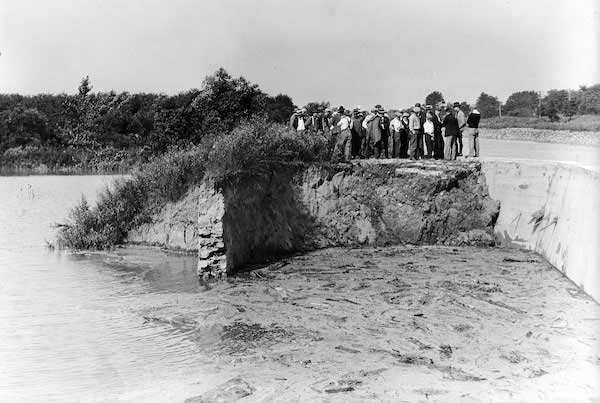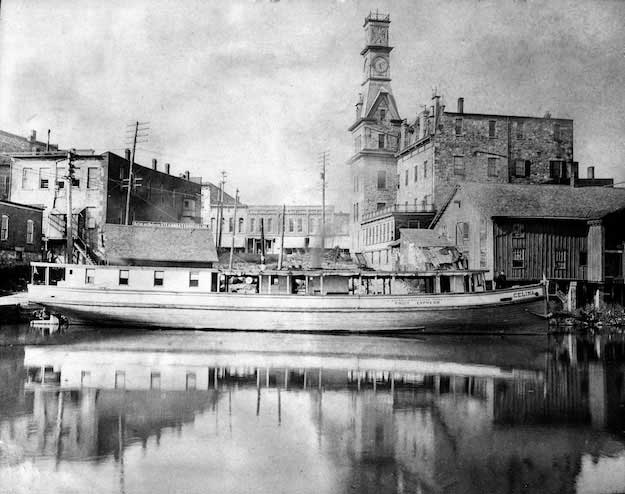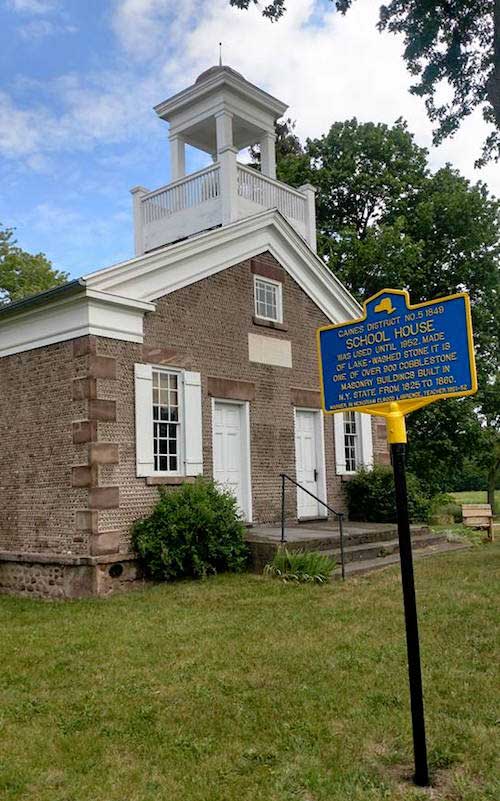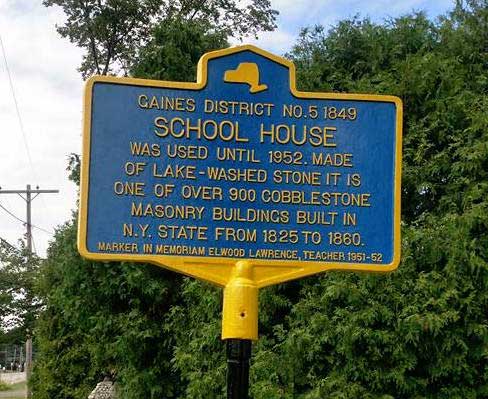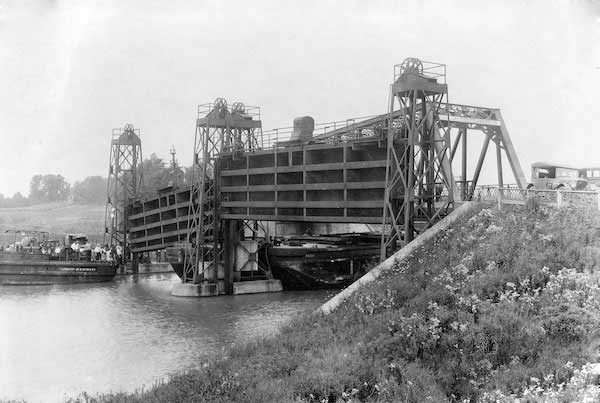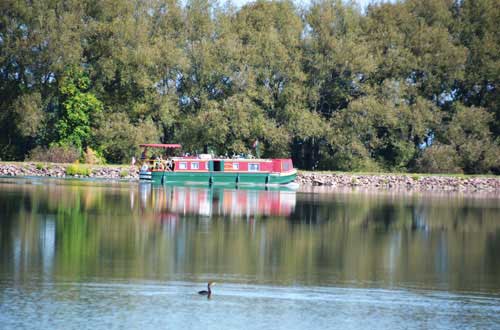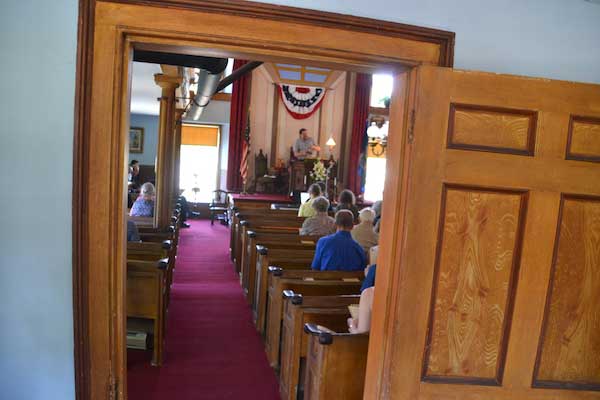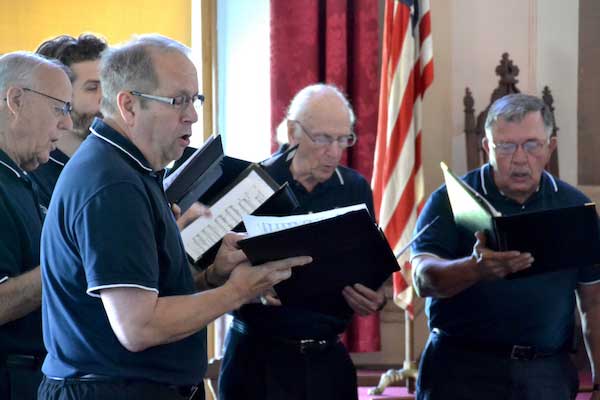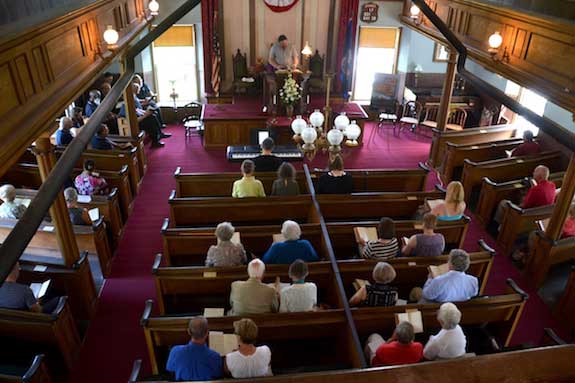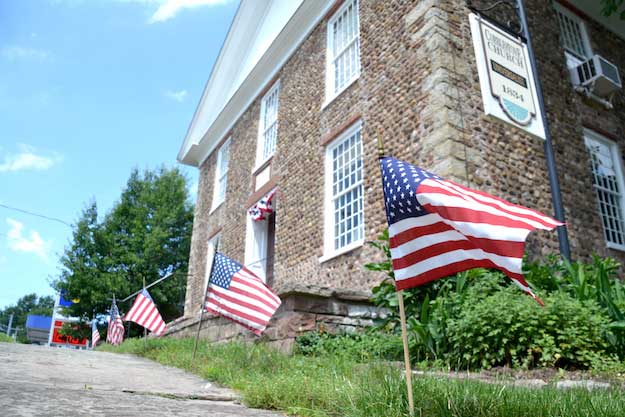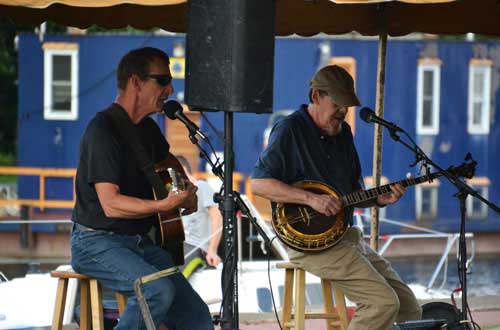Cobblestone Museum rededicates bell on historic schoolhouse
Photos by Tom Rivers
GAINES – The Cobblestone Museum celebrated the rededication of the bell on the historic schoolhouse on Ridge Road on Saturday.
The supporting structure on the bell tower had deteriorated, and the bell sunk down and couldn’t be rung. Museum volunteer Russell Bosch did much of the work to fix the structure up high for the bell.
The bell was rededicated in memory of the Honorable William Jenks Babbitt. He gave the bell to the school in 1849. Many years silent, the bell will now ring once again to remind all who will hear it of the remarkable legacy of a true Orleans’ pioneer.

The bell was rededicated in honor of William Babbitt, who bought the bell and gave it to the school when it opened in 1849. It served the Gaines District #5 Cobblestone Schoolhouse until the school was closed in 1952.
“The gift of the bell served the community well until the closing of the school in 1952,” said Gaines Town Historian Al Capurso. “Over the years, the supporting structure for the bell gave way and the bell dropped down making it unusable.”
Capurso arranged to have the work done, and secured a $200 donation from the Orleans County Historical Association.
Capurso shared some history of Babbitt, who Babbitt arrived in “Genesee Country” in 1810. Following the War of 1812, he moved his family to what would become Gaines. He became the area’s first blacksmith, established the first brickyard in Gaines, supplying the brick for most area buildings. Babbitt was appointed Justice of the Peace in 1815. In 1816, he worked to get the Ridge Road designated as “The Post Road” by NYS, and served as the first postmaster of Gaines.
Babbitt pushed hard to get the Town of Gaines to be set apart from Ridgeway and recommended its naming after War of 1812 hero General Edmund Pendleton Gaines. In 1831, Babbitt became the Town of Gaines Supervisor and then served the district in the NYS Assembly.
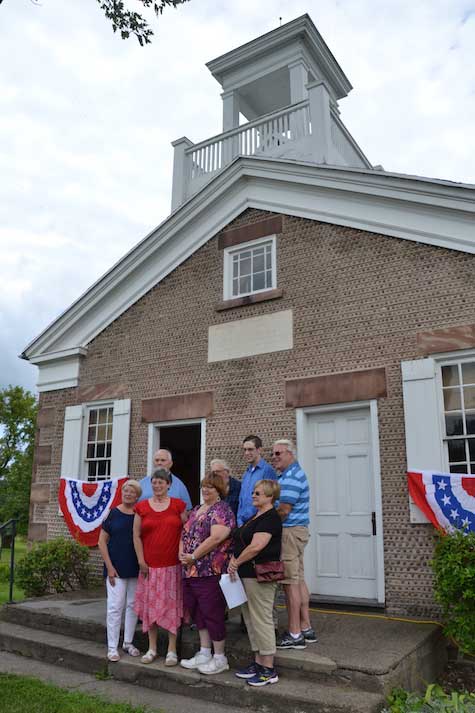
Descendants of William Babbitt attended the rededication at the schoolhouse.
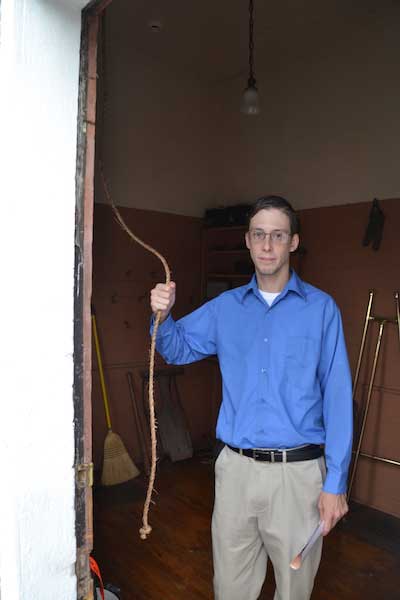
Jeffrey Kleiner, a seventh-generation descendant of William Babbitt, rang the bell during Saturday’s program. Kleiner travelled from Albany to attend the event.
The schoolhouse is a short walk east of the Route 98 intersection on Ridge Road. The school was closed in 1952. The building was acquired by the Cobblestone Museum in 1960 – the year the museum formed – and is a National Historic Landmark.
Richard Flanagan, 14, and his brother Nate Flanagan, 10, raise the American flag with help from Jonathan Doherty. They are members of Troop 164 in Albion.
Museum President Jim Bonafini thanks supporters of the bell rededication. County Historian Matt Ballard is in back at left, followed by County Legislator Fred Miller and Gaines Town Historian Al Capurso.
Ballard said the pioneers, after constructing their homes and establishing farms with crops to sustain themselves, built schoolhouses.
“There was no hesitation in providing instruction to young pupils,” Ballard said. “When school was held in the homes of neighbors, or in a local barn, the lack of a permanent structure in which to provide this training was never enough to halt the institution. Education served as a fundamental feature in life, when quality of life was poor and longevity was questionable at best.”

The bell was ringing again on Saturday during the rededication program.
Ballard said Babbitt was instrumental in establishing the Gaines Academy and oversaw the erection of the schoolhouse.
“Just as important as the bell within the belfry of the church, used to call the devout worshiper to Sunday service, so did this bell call many young pupils to class, ending recess, and sending children home for evening chores and dinner,” Ballard said. “Today, the bell sounds once again as a reminder of the important role in which education has always played in producing intelligent and well-rounded citizens.”
The inside of the schoolhouse is largely unchanged since the building closed in the 1950s.
























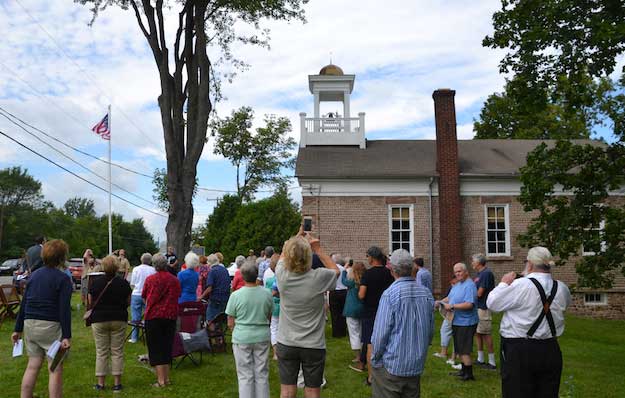


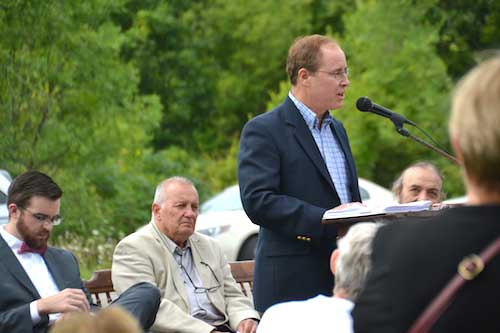
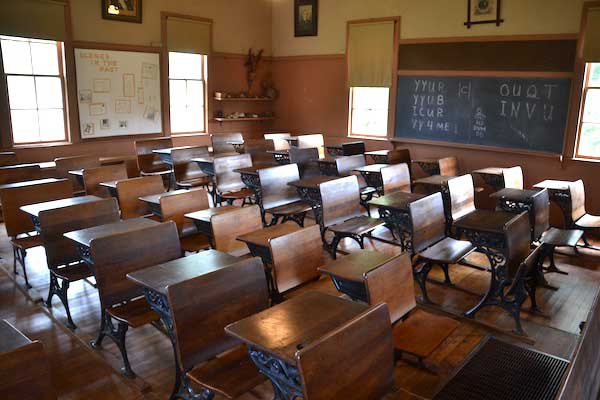
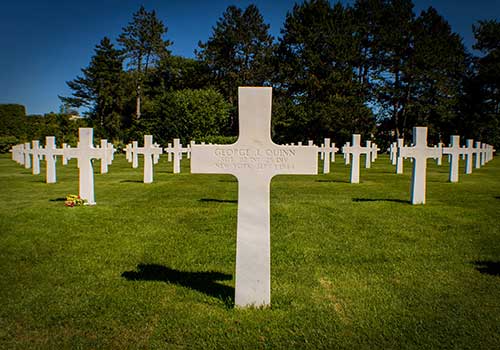
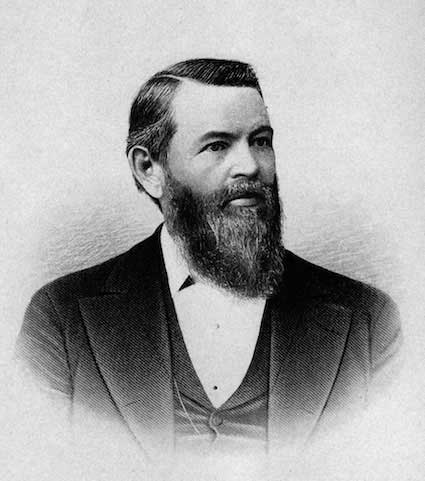 “Overlooked Orleans” – Volume 3, Issue 33
“Overlooked Orleans” – Volume 3, Issue 33

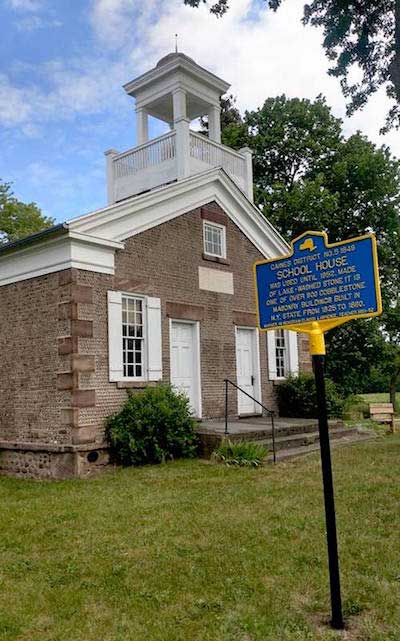

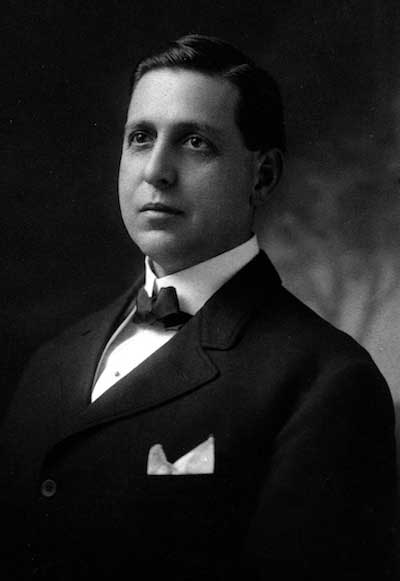 “Overlooked Orleans” – Volume 3, Issue 32
“Overlooked Orleans” – Volume 3, Issue 32